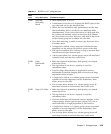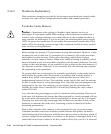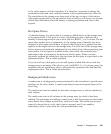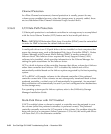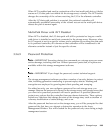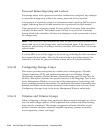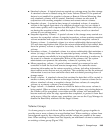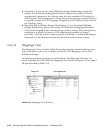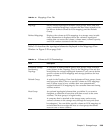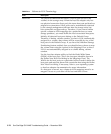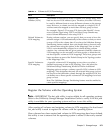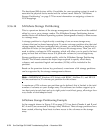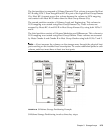
3-66 Sun StorEdge 5310 NAS Troubleshooting Guide • December 2004
To create a volume group, two parameters must be specified: RAID level and
capacity (how large you want the volume group). For the capacity parameter, you
can either choose the automatic choices provided by the software or select the
manual method to indicate the specific drives to include in the volume group. The
automatic method should be used whenever possible, because the software provides
the best selections for drive groupings.
FIGURE 3-28 Unconfigured and Free Capacity Nodes
3.3.6.12 Standard Volumes
Note – IMPORTANT The host operating system may have specific limits on how
many volumes the host can access which must be considered when creating volumes
for use by a particular host. For operating system restrictions, refer to the SANtricity
Storage Manager Product Release Notes that were shipped with the software and
your host operating system documentation.
A standard volume is a logical structure created on a storage array for data storage.
A volume is defined over a set of drives called a volume group, and has a defined
RAID level and capacity. Volumes are created from either unconfigured capacity or
free capacity nodes on the storage array. If no volumes on the storage array are
configured, the only node available is the unconfigured capacity node (Figure 3-28
on page 3-66).
The Create Volume Wizard is used to create one or more volumes on the storage
array. During the volume creation process, the Wizard prompts you to select the
capacity to allocate for the volumes and to define basic and optional advanced
volume parameters for the volume. Each Wizard screen has context-sensitive help.




